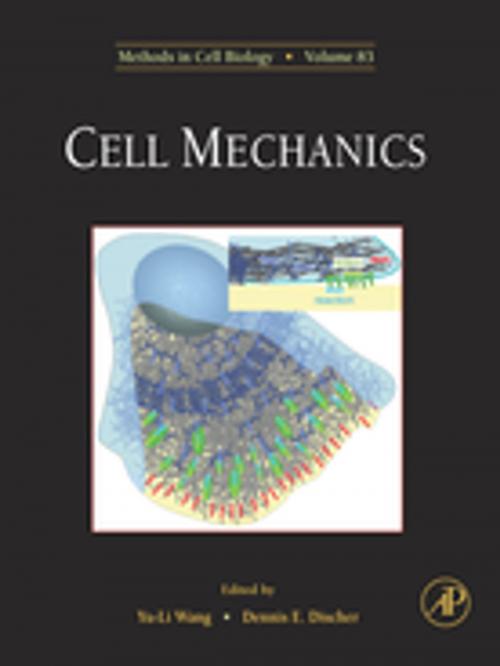| Author: | ISBN: | 9780080548708 | |
| Publisher: | Elsevier Science | Publication: | July 5, 2007 |
| Imprint: | Academic Press | Language: | English |
| Author: | |
| ISBN: | 9780080548708 |
| Publisher: | Elsevier Science |
| Publication: | July 5, 2007 |
| Imprint: | Academic Press |
| Language: | English |
Cell mechanics is the field of study that looks at how cells detect, modify, and respond to the physical properties of the cell environment. Cells communicate with each other through chemical and physical signals which are involved in a range of process from embryogenesis and wound healing to pathological conditions such as cancerous invasion. Similar principles are also likely to be critical for success in regenerative medicine. Cell mechanics is thus central to understanding these principles. As cell mechanics draws from the fields of biology, chemistry, physics, engineering, and mathematics, this book aims not only to provide a collection of research methods, but also to develop a common language among scientists who share the interest in cell mechanics but enter the field with diverse backgrounds. To this end all of the contributing authors have sought to explain in plain language the nature of the biological problems, the rationale for the approaches, in addition to the methods themselves. In addition, to balance practical utility against conceptual advances, Cell Mechanics has intentionally included both chapters that provide detailed recipes and those that emphasize basic principles.
- Presents a distinctive emphasis on matrix mechanics and their interplay with cell functions
- Includes highly significant topics relevant to basic and translational research, as well as tissue engineering
- Emphasizes mechanical input and output of cells
Cell mechanics is the field of study that looks at how cells detect, modify, and respond to the physical properties of the cell environment. Cells communicate with each other through chemical and physical signals which are involved in a range of process from embryogenesis and wound healing to pathological conditions such as cancerous invasion. Similar principles are also likely to be critical for success in regenerative medicine. Cell mechanics is thus central to understanding these principles. As cell mechanics draws from the fields of biology, chemistry, physics, engineering, and mathematics, this book aims not only to provide a collection of research methods, but also to develop a common language among scientists who share the interest in cell mechanics but enter the field with diverse backgrounds. To this end all of the contributing authors have sought to explain in plain language the nature of the biological problems, the rationale for the approaches, in addition to the methods themselves. In addition, to balance practical utility against conceptual advances, Cell Mechanics has intentionally included both chapters that provide detailed recipes and those that emphasize basic principles.
- Presents a distinctive emphasis on matrix mechanics and their interplay with cell functions
- Includes highly significant topics relevant to basic and translational research, as well as tissue engineering
- Emphasizes mechanical input and output of cells















